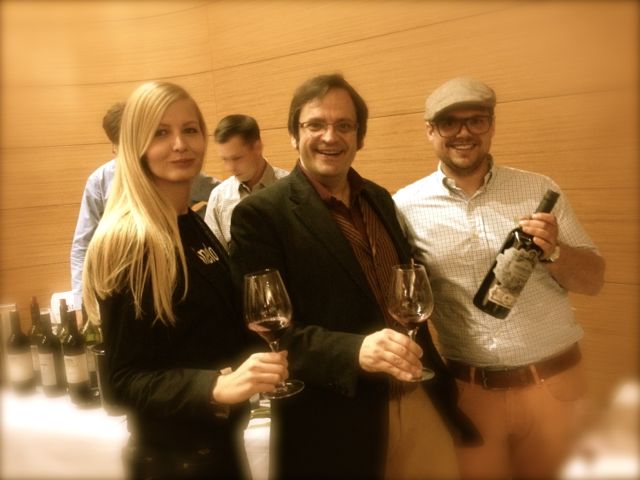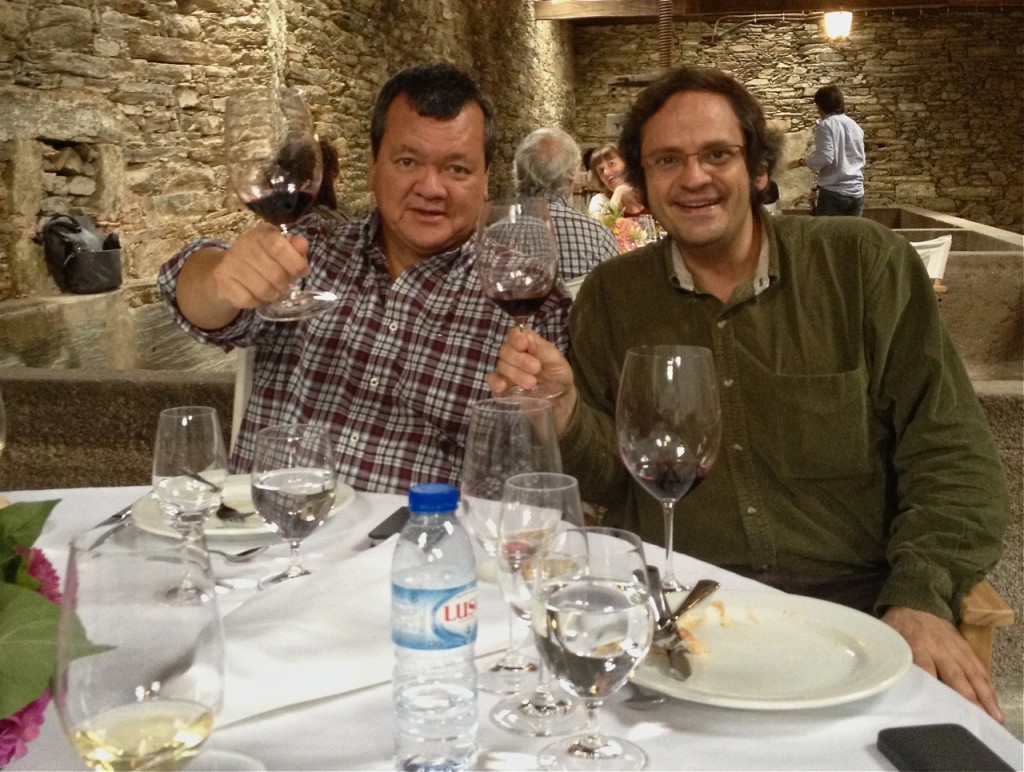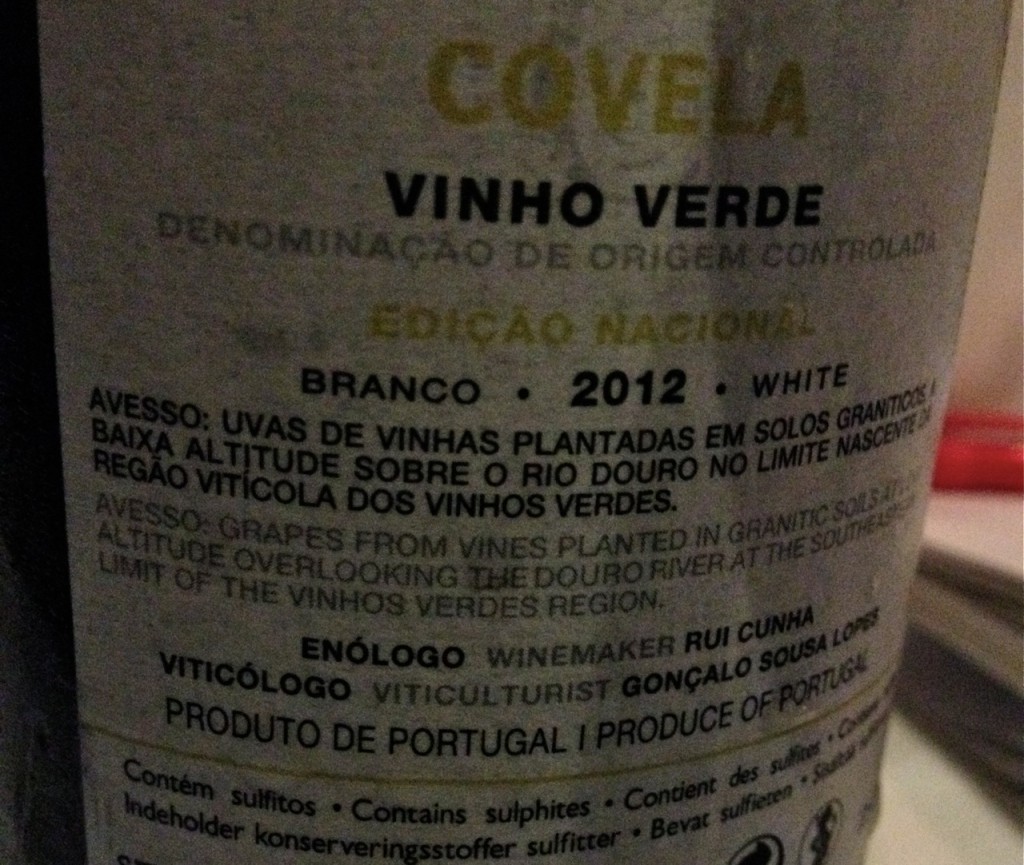Tired of expensive wine

By Panos Kakaviatos for wine-chronicles
An original wooden case of six bottles of Clos des Lambrays 2012, purchased direct from the domain, cost me over €600. Clos des Lambrays is hardly the most expensive grand cru Burgundy. While more expensive than, say, most Corton grands crus, it is not nearly as onerous on the wallet as Grands Echezeaux or Musigny – to take but two examples. But prices will go up from this lovely estate, which in April was purchased by French luxury giant LVMH. That is what director Thierry Brouin told me when I visited in June 2014.
I do love high end wine. While in Florence this past May – for a once-in-every-four-years symposium for the Institute of Masters of Wine, which cost me almost €2000 to attend including lodging, travel and the event itself – I was able to taste expensive cult wines like Pingus and Henschke Mount Edelstone among others. Over dinner at Chateau Haut Bailly in 2013, I also drank Screaming Eagle and Harlan (I prefer Harlan as it seems more classical). As some readers know, I regularly taste Petrus from barrel at the en primeur barrel tastings in Bordeaux and hold fond memories of recent visits to Krug and Dom Perignon and Jacques Selosse in Champagne.
But before I start imitating James Suckling, are you not getting annoyed with (1) über expensive fermented grape juice too posh for its own good and (2) insufferable show offs claiming “I tasted this” and “I tasted that” (mea culpa)?
Modesty as a virtue?
My second visit ever to Bordeaux (in 2001) was at Langon in the southern Graves region, at a little-known estate called Chateau de Gaillat. Hugh Johnson once praised its “dusty tannins”. Celebrated French wine author and taster Pierre Coste made the wine rather well known in the 1980s and into the 1990s. By the time I got there, the estate was in some disarray. I met Pierre before he died and his daughter Helene and her late husband Yves Bertrand. It was the harvest season with workers from Spain to Morocco. And Didier, the bearded Gitanes-smoking vineyard director who – before a tasting – admonished me for drinking coffee while he chain smoked: about as far and away as one could be from Latour.
Wine as a drink: now that’s a concept
Certainly France has a rich supply of wines with excellent price/quality ratios, from fine cru bourgeois in Bordeaux and over performing Rhone and Loire Valley wines to grower Champagnes and tasty village level Burgundies. And from Hungary to Australia, from Greece to the UK, one finds increasingly excellent quality in wines.
More serious winemakers the world over are taking advantage of optimal microclimates and soils, and consumers can purchase resulting fine wines that cost neither an arm nor a leg. Some are downright cheap and very good.
So as amazing as “great” wines can be, most people who drink cannot afford them and realize, too, that wine is something that one pisses out. It is not a Picasso to hang on your wall that gets passed down from one generation to another or sold to a worthy museum for public viewing.
“They are luxury products,” is the ever recurring refrain. And I get it. At a tasting earlier this year of 2004 Bordeaux at Bordeaux Index in London, the first growths showed better than most of the other Medoc wines. Even if that is not always the case, because the “top tier” can underperform (for example, the Cheval Blanc 2004 did not seem to be great shakes at that tasting…).
Whatever the case may be, I am getting fed up with sky-scraping price tags and all the hoopla associated with them.
And you should be, too.
I bought La Fleur Petrus 1998, for example, back in 2002 for $60 in Washington D.C. These days a vintage of comparable quality is over three times as expensive. Is the wine three times better?
No way.
So let me describe some wines I have tried recently that do not appear on most people’s radar screens. These wines are listed in no particular order but I have an affection for all of them.
Smooth and easy Blaufränkisch

With Hungarian wine expert (WSET diploma student) Rita Toth and Groszer wine rep Markus Bach at a tasting in Budapest
As friend and MW student Thomas Curtius remarked, “For the price of one expensive bottle, I can get a case of great drinking wines that can be enjoyed sooner.”
Take for example Austrian Blaufränkisch. At a tasting in Budapest earlier this year, I came across liter-sized bottles of Groszerwein, which were fresh and delicious. This wine costs under €13 per bottle. Of course there were higher-end cuvées but I rather preferred the simple freshness of this basic wine, and I loved the price.
And representative Markus Bach explained that the wines are made from vines growing in Südburgenland, in the southernmost part of eastern Austria, not too far from the Hungarian plain. They benefit from a Pannonian/Illyrian climate – a confluence of extreme continental and milder Mediterranean characteristics – imparting freshness of fruit and elegance to the wines. Vines grow along the south-facing slope of the Eisenberg, 415 meters tall with soils of slate quartz and layers of loam laced with iron and clay that impart freshness and ripeness.
Yes, you can appreciate 40-year-old Chianti
I have discovered that wines from regions that one may think do not age well can… age very well. During the Master of Wine Symposium I had the pleasure of visiting the lovely Villa Calcinaia Conti Capponi just outside Florence. Owner Sebastiano Capponi guided a group of WSET educators, MWs and others in the wine trade, ending with a delectable dinner in a thoroughly cozy setting.
Among the many wines we tasted: a delicate and tasty – with intriguing dry flower/Potpourri aromas – 1975 Chianti Classico, 100% Sangiovese and 12,5% alcohol. It had aged very well and accompanied our meal perfectly.
Bubble shocks
After visiting Krug recently, I then tasted a lovely bottle of Tarlant Zero Brut Nature, which enjoys at least three year contact with the lees before disgorgement. While it does not have the sheer complexity and persistence of Krug, it costs far less per bottle. I can buy 6 bottles of Tarlant for one bottle of Krug. So one can find very economically priced Champagnes that are downright delicious.
And fine bubblies are to be enjoyed from around the world, from Franciacorta, Italy to … Virginia, United States. In January 2014, I hosted a wine tasting for a neighborhood garden club at Chain Bridge Forest in Arlington, Virginia. Participants had a casual to keen (non professional) interest in wine and tasted a series of bubblies and compared. Lo and behold the Thibaut & Janisson Virginia Brut USA, $28 per bottle, obtained the most votes – 3 for first place, 6 for second, and 3 for third – because it was so smooth and soft and lively too.
It beat out a Pierre Peters Brut, twice as expensive, much to the chagrin of “more educated” sommeliers who cried foul on my Facebook page. But I guess there is a reason why President Barack Obama serves it to foreign dignitaries at the White House.
Two years ago, I served blind Taittinger Brut against Breaky Bottom 2006 English sparkling wine – both cost the same in the UK – and all participants found the latter to be more precise and fresh:“This is more like Champagne” one French taster put it, speaking of the Breaky Bottom.
Seek and ye shall find
One of the more interesting surprises I enjoyed while attending the annual wine fair VinCe in Budapest earlier this year were the wines of Mustafa Camlica such as the delectably orange citrus flavors emanating from his 100% Narince varietal wine made from vines grown on high-altitude (370 meters) granite soils from the Strandja mountains.
Or his meaty and spicy 2013 Papaskarasi from Eastern Thrace at 12.5% alcohol – photo below – giving off lovely floral aromatics and smooth flavors. The colorful labels, strikingly attractive and designed by Mustafa’s daughter, earned a gold medal for best label design at the Balkans International Wine Competition.
Wine is a journey of discovery: fun to go to countries and taste their wines. Perhaps one of the best online groups I know are loosely called #winelovers.They organise tours both fun and informative. I have only gone to one such excursion, to Budapest, as organised by Master of Wine student Lotte Karolina Gabrovits.
When participants post on social media, they use the hash tag #winelovers.
The next best thing to making the physical journey is being invited to judge wines at international competitions. When I was invited to judge at Mundus Vini earlier this year in Germany, I discovered some excellent wines from Austria, and notably fine efforts from the Saint Laurent grape while judging in a panel – blind tastings – led by the knowledgeable and friendly Paul Robert Blom.
We also discovered excellent blends of Monastrell, Cabernet Sauvignon and Shiraz and Monastrell and Tempranillo from Jumilla and Valencia, respectively, in Spain. Not all the wines tasted blind were good – some were rather bad – but plenty of pleasant surprises abounded. And it makes me curious to visit lesser known regions where people are making delicious wines and you do not have to pay a premium for the brand.
Take for example the recently refurbished Quinta de Covela in Portugal. Tony Smith, former Associated Press writer, abandoned war zone reporting to purchase (with fellow investor Marcelo Lima) this Douro Valley vineyard in 2011 – an already known brand but in need of new direction. The estate has been working hard and recently won Viticulture of the Year 2013 by Revista de Vinhos, a sort of Portuguese wine Oscars.
A tour to the estate was organized for various bloggers during by the 2013 Digital Wine Communications Conference.
Many of the wines bloggers tried were bright, fresh and delicious. For example the Edição Nacional Arinto Vinho Verde 2012 exuded freshness with subtle mineral character and notes of citrus and flowers. Vines grow on granitic soils that form a natural, low-altitude amphitheatre facing south on the right bank of the Douro river at the southern edge of the Vinho Verde region. Cold winters and hot, dry summers, mix a continental climate with maritime influence. Tony told me that the Edicao Nacional Arinto 2013 just scored 92 points with Wine & Spirits, although I have not tried that vintage yet.
The grapes are hand picked plot-by-plot, allowing for the right grapes to be picked at the best time and then transported in small boxes. For the winemaking, no enzymes are used, there is spontaneous fermentation in temperature controlled stainless steel vats and fining with Bentonite (and light filtration) when necessary.
Greece coming out of its crisis? Certainly loving the wine.
As tourists recently left some $100m in tips while vacationing in Greece and investors returning, people are waking up to increasingly good quality Greek wines. A recent #winelovers tour to Nemea for example yielded much press coverage.
And thanks to Konstantinos Lazarakis MW and other dedicated wine people in Greece, including Ted Lelekas and Yiannis Karakasis, I have discovered some excellent wines from my country of origin.

Getting a feature on Nemean wines as tasted by non Greek wine tasters surely caught the eye of international media based in Greece.
During a tasting at the Intercontinental Hotel in Athens in November 2013, for example, a special moment tasting an excellent red, from a three-liter bottle no less: Domaine Skouras Megas Oenos made from 80% Agiorgitiko and 20% Cabernet Sauvignon.
Is this the Greek equivalent of a Super Tuscan? I hope not. Fermented and macerated in stainless steel, the malolactic fermentation and 18 months of aging takes place in new French barrels. I was worried when I tasted a more recent vintage, because it was marked by oak aromas and flavors. I am not a fan of, say, Ornellaia and its heaviness.
But the 2005 Nemean wine, at 12.5% alcohol, was smooth and delicious.
Representatives from those other regions were presenting their wines at the Intercontinental as well, including Anne Laure Chartron of Domaine Chartron in Burgundy, who asked me which Greek red she should try. After I suggested the 2005, she also really liked this wine.
Mineral purity does not mean having to spend Big Bucks
Take a Tokaji Dry (Furmint grape) from Domain Disznoko in Hegyalja, Tokaji, which may be the very best dry Furmint I have ever had, even though I have not tried all that many, as I have only been to Hungary three times and in France it is not easy to purchase dry Furmint …
The bottle costs under €10, made in stainless steel fermentation with just 40% malolactic, and two months lees contact. I just loved the freshness and minerality and the clean and pure aspect of this wine, with very little if any residual sugar, 13% alcohol and 5.8 grams per liter of acidity. The salty finish is pleasurable and echoes flavors of wet stone and pear. I bought a case without any hesitation.
Finally, mineral driven beauty in white wine can be found in many parts of the world. You need not spend a fortune for top Burgundy when you can enjoy wines made from Austria’s Weingut Prager, for example, which I sampled at VinCe.
Almost every single one we tried at a master class organized by Drop Shop, a lovely wine bar in Budapest, proved delicious and deep. Although not inexpensive, one can enjoy some of the wines for 35 euros per bottle.
Millionaires have and always will purchase cult wines and special cuvees in the triple if not quadruple digits, but it can only be good news for consumers that more wine-producing regions – from the Old to the New World – are making better quality wines and putting downward price pressure on more established brands that have become too expensive.
 Wine Chronicles
Wine Chronicles










Great Video
Thanks!